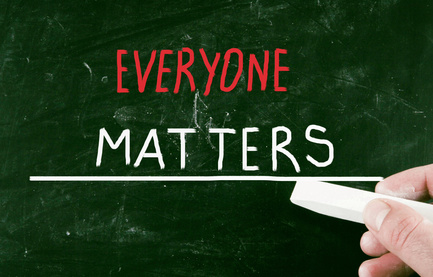Inclusive learning styles with a personal touch – it’s a bit of a nightmare!
So, there I was, in the middle of the night, wide awake, sweating and shaking after a particularly vivid nightmare. In my dream I had been teaching a class and each of the students was wearing a bib like those ones netballers wear. There were four different colours, each with a different letter: V, A, R and K. None of the students were doing any work and when I asked them why not they each demanded that the work be presented in a very particular way to align with their learning style. One said “I’m a visual learner, can I draw you something in response to your question?” Another stated “I’m an aural learner, let’s sit down and discuss what I’m supposed to do”. A third said “don’t ask me to draw you something but I can write it down” As I approached the fourth student with the “K” (for kinaesthetic learner) on his bib I woke up, which was a bit of a relief. How was I meant to deal with these demands and at the same time deliver the content of the module? If I didn’t get it right some, perhaps most of my students would struggle or fail and then there’d be trouble. It was all just too much.
Luckily it was all just a dream, but the issue is still a live one[1]. The issue of learning styles has been around for some time but it is no longer an orthodoxy. Frank Collfield from the Institute of Education along with Kathryn Ecclestone and others wrote a critical review[2] in 2004 which, among other things sought to contest the idea of individuals having simple, stable styles of learning which, if only teachers knew about, would change the way that teaching, learning was delivered. In fact many commentators and writers are now of the view that we probably do our students a disservice by promoting a belief that everyone has a ‘learning style’. John Hattie and Gregory Yates[3] also questioned the learning styles myth, stating:
“We are all visual learners, and we all are auditory learners, not just some of us. Laboratory studies reveal that we all learn when the inputs we experience are multi-modal or conveyed through different media.”
It’s true, I think, that people learn in different ways and probably prefer to learn in different ways, but if they believe they can only learn in one way then they either neglect to develop skills in other areas or convince themselves that they can’t learn in other ways and thus can’t undertake certain tasks, all of which then becomes a self-fulfilling prophesy.
How does this affect us in universities with their range of disciplines? If we accept that we all learn things differently in different settings, depending on the tasks involved, then we need to bring this awareness into our teaching. We might acknowledge, for example, that an engineering student will need to use a range of learning styles, depending on whether she’s learning how to talk to clients, take part in a practical activity, assimilate data from a spreadsheet, take notes in a lecture, or work effectively in a multidisciplinary team. Students therefore need to have a clear idea of what’s expected on their taught programmes, rather than simply seeing themselves simply as a “visual”, “auditory” or “kinaesthetic” learner. Arguably, the most successful students are those who can be adaptable in a wide range of learning situations, and develop the confidence to work outside of their comfort zones.
This then is a clear call for inclusive teaching and learning approaches which are what Zhang (2013) calls “malleable[4]”. If we accept that our students have differing needs at different times and our teaching is not only responsive to but anticipates this, then we are more likely to include more of our students in the learning journey and help more of them to succeed. This is not an easy option, but it is the right one I think. Teaching may not always be a dream but it needn’t be a nightmare either!
Other reading:
Timothy J. Landrum & Kimberly A. McDuffie (2010): Learning Styles in the Age of Differentiated Instruction, Exceptionality, 18:1, 6-17 [available to download from http://www.tandfonline.com/doi/abs/10.1080/09362830903462441 ]
Cedar Riener & Daniel Willingham (2010): The Myth of Learning Styles, Change: The Magazine of Higher Learning, 42:5, 32-35 [available to download from http://www.tandfonline.com/doi/abs/10.1080/00091383.2010.503139 ]
[1] See Graham Gibbs’ 53 Powerful Ideas: http://www.seda.ac.uk/53-powerful-ideas
[2] http://sxills.nl/lerenlerennu/bronnen/Learning%20styles%20by%20Coffield%20e.a..pdf
[3] “Visible Learning and the Science of How We Learn” (2014)
[4] “The Malleability of Intellectual Styles” (Zhang, 2013; Cambridge University Press).
